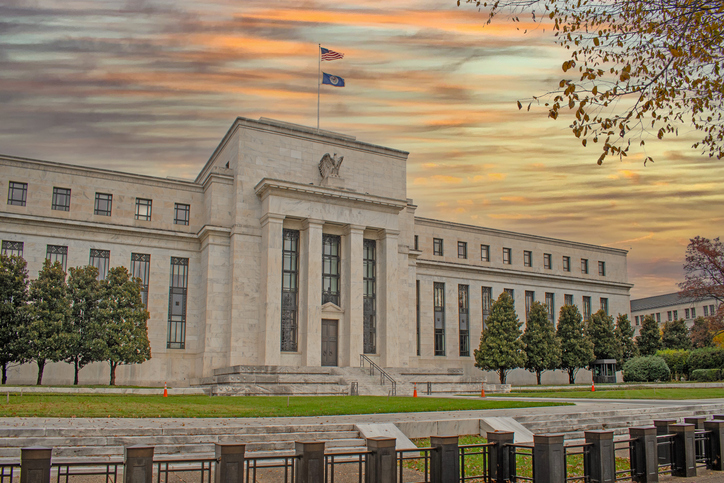NBFIs come under regulators’ spotlight
Nonbank financial institutions (NBFIs) such as hedge funds, private equity firms, and money market funds have taken a growing share of financial intermediation from traditional banks. This shift toward so-called “shadow banking” has heightened concerns about systemic risk, prompting regulators to step up scrutiny of the sector.
The EU is the latest jurisdiction to turn up the heat on NBFIs, with the ECB preparing new stress tests amid growing concerns over systemic risks. While hedge funds and private equity firms have drawn particular attention due to their relatively light regulatory oversight, the upcoming assessments are also expected to cover pension funds and insurers.
Lending growth by NBFIs has steadily outpaced that of traditional banks, reinforcing concerns about the opacity of their practices and disclosures. As key components of the shadow banking system, these entities often engage in complex and less transparent activities, which can amplify risks such as leverage and liquidity mismatches. Regulators and some market observers fear that, if left unchecked, these factors may pose significant threats to regulated banks and the broader financial system.
Developments in Europe follow similar moves in the US and UK that reflect comparable regulatory concerns.
***
Get weekly insights from The Intuition Finance Digest. Elevate your understanding of the finance world with expertly-crafted articles and podcasts sent straight to your inbox every week. Click here: https://www.intuition.com/finance-insights-the-intuition-finance-digest/
***
Fed tests for NBFI credit and liquidity stress
The Federal Reserve (Fed) recently announced an “exploratory analysis” into risks to the banking system, focusing initially on how banks might be affected by adverse conditions impacting their NBFI borrowers.
To assess the risks of credit and liquidity shocks to NBFI borrowers during a severe global recession, the Fed will simulate macroeconomic conditions equivalent to the “severely adverse” scenario used in its broader 2025 banking supervisory stress tests.
The exploratory analysis will also consider additional credit and liquidity stress factors likely to affect specific categories of NBFIs, including:
- A sharp deterioration in the credit quality of assets held by highly leveraged NBFIs that extend credit, resulting in downgrades to their own credit ratings
- Heavier reliance on bank credit lines, as NBFIs – historically more dependent on these facilities during periods of stress – draw down their available funding more aggressively

Bank of England tests
Late last year, the Bank of England released results from an exercise modeling how a financial crisis would impact on the nonbank sector. The Bank’s November Financial Stability Report highlighted significant and growing interlinkages between UK banks and nonbank finance, as UK investment banks provide market-based finance (MBF) that supplies liquidity and funding to NBFIs.
The Bank’s report also noted banks’ substantial counterparty credit exposures, including to leveraged counterparties such as private equity firms and hedge funds via prime-broking activities. Were NBFIs to reduce exposure to riskier credit assets, such as leveraged loans, banks could face mark-to-market losses in their origination, underwriting, and syndication activities.

Lending to NBFI sector accelerates
A new report by Barclays research analysts states that US bank lending to NBFIs has risen fivefold over the past decade to over USD1 trn. This figure accounts for more than 10% of all US banking loans and 5% of assets.
Essentially, banks are lending less directly to end-customers and more to NBFIs, which in turn deal directly with those customers.
According to Barclays, this shift is largely driven by capital requirements. In the US, most commercial exposures carry a 100% risk weighting, whereas loans to NBFIs may carry risk weightings as low as 20%.

Implications of market shock
As for the wider implications of a market shock, the Fed is expansive on the cascading and interlinked effects throughout financial markets.
Its exploratory market shock is described as a sudden dislocation to financial markets arising from expectations of reduced global economic activity and higher inflation expectations.
Under these conditions, the US dollar is expected to appreciate against other major currencies. Interest rates and commodity prices would increase, threatening persistent inflation. Yields on short-term Treasury securities could rise sharply, while long-term yields would increase to a lesser extent. Anticipated defaults would push credit spreads wider.
Is AI the missing link in modern investing?
In equity markets, prices would fall in response to slower economic growth, while volatility would increase amid heightened uncertainty. This volatility would cause certain equity positions to severely underperform market indexes.
In this scenario, hedge funds unable to meet margin calls would be forced to liquidate equity positions at a loss. The Fed assumes the five hedge funds with the largest counterparty exposures for each bank would fail, illustrating the potential cascading impact on the broader financial system.
Conclusion
It’s notable that this increased regulatory focus on NBFIs and shadow banking is unfolding amid broader deregulatory pressures from the Trump administration in the US. This may suggest tension between the administration and financial authorities – a recurrent theme this year worth keeping an eye on.
Intuition Know-How, a premier digital learning solution for finance professionals, has several tutorials relevant to the content of this article:
- Financial Authorities (Europe) – ECB
- Financial Authorities (US) – Federal Reserve
- Financial Authorities (UK) – Bank of England
- Regulation – An Introduction
- Markets Regulation – An Introduction
- Banking Regulation – An Introduction
Browse full tutorial offering



